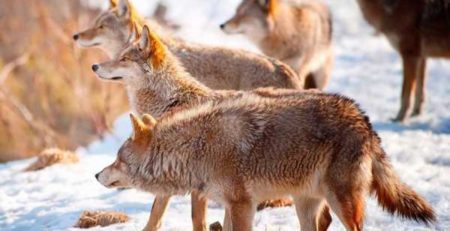CO2 emissions from livestock production in the United States will be reduced by a quarter if cats and dogs are not fed with meat
American researcher Gregory Okin from the University of California in Los Angeles appreciated the role of domestic animals in the “carbon footprint” in food production in the United States: annually greenhouse gas production through pet food production is about 64 million tons of carbon dioxide (CO 2 ) .According to the results of the study, it also turned out that compared to people, domestic dogs and cats consume about 19 percent of food (in energy equivalent), while the share of animal products accounts for even more – up to 33 percent. The work was published in the open magazine PLOS One.
A “carbon footprint” is a measure of greenhouse gas emissions from a single process: life, production, transportation, and so on. Typically, the content of greenhouse gases is expressed in equivalent amounts of produced carbon dioxide. In particular, food production is inevitably associated with the use of land, water, fossil fuels and other resources, and therefore leads to negative environmental consequences, including increased production of greenhouse gases.
It is known that the production of animal products (especially meat) requires significantly more resources, than for plant. This can be considered an argument in favor of less eating meat. However, until now, in the case of animals, only their carbon footprint was assessed due to respiration, but no one analyzed the footprint in terms of the production of pet food, especially predatory animals, for which meat products are the basis of the diet.
The author of the new open source study estimated how much food cats and dogs in the United States consume on average, and how much of their diet is based on animal products. For this, Okin used data on the number of domestic cats and dogs in the United States for 2015, their breeds, the daily dietary rate, and the composition of the most popular feeds. The author in his calculations used “average” cats and dogs with a mass of 4.2 В± 0.2 and 22 В± 1.2 kilograms, respectively.
It turned out that pets consume up to one-fifth (19 percent) of their owners ration, or one-third (33 percent), per day, if we compare only products of animal origin. This means that if all pet owners in the US stopped feeding them meat, the production of greenhouse gases would, hypothetically, be reduced by a quarter. However, the final result strongly depends on the type and quality of feed. Thus, in the premium class feed, almost 50 percent accounted for animal products, and in the most popular varieties – only 25.
To assess the significance of these findings, Okin also examined data on how water, fuel and other resources are used in food production depending on the biological origin of certain products. It turned out that the production of one unit of animal products requires from 6 to 17 times more land, from 4 to 26 times more water and up to 20 times more fossil fuels compared to a unit of plant products. The author notes that between a quarter and a third of these resources are accounted for pets in comparison with products for humans. Such food consumption in terms of the carbon footprint of greenhouse gases – methane and nitrous oxide – is 64 В± 16 million ton-equivalents of carbon dioxide.
According to the scientist, when evaluating certain consequences of the production and use of products, it is necessary to take into account not only people, but also their pets. In the final part of the article, the author shows that domestic cats and dogs in the United States consume almost as much energy (and, consequently, leave the same carbon footprint) as 62 million Americans. The scientist notes that despite the fact that pets certainly play an important role in the lives of their owners, it is worth thinking about buying herbivores, which will drastically reduce the production of animal food and, consequently, reduce greenhouse gas emissions.
Separately, Okin touches on the issue of meat content in feeds of various levels and provides another visual comparison: if at least a quarter of all animal food in feeds would be edible for people, it could feed 5 million people (the approximate population of Krasnodar Region).
Greenhouse gas emissions in developed countries are controlled by a number of agreements, in particular the Kyoto Protocol adopted in 1997. In the study by Gregory Okin, all the data is about the United States, which signed the Kyoto Protocol, but did not ratify it. Recently, a study was published in which the authors proposed a hypothetical scenario that would allow the United States to achieve the indicators set by the national climate plan by 2020: all that is needed for all Americans to stop eating beef today and eating beans instead.
Source: https://nplus1.ru/news/












